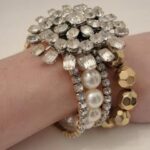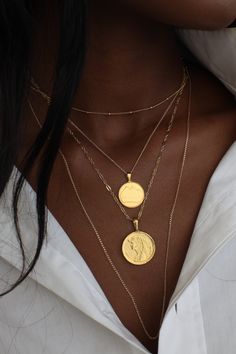Diamond jewelry is not only a beautiful accessory but also a significant investment. Whether you are buying or selling diamond jewelry, understanding how to accurately price these precious gems is essential to ensure fair transactions. In this article, we will delve into the factors that affect the price of diamond jewelry and guide you through the process of pricing diamond pieces effectively.
When it comes to pricing diamond jewelry, accuracy is key. The value of a diamond is determined by a variety of factors, including its cut, color, clarity, and carat weight – commonly known as the 4Cs. Each of these elements plays a crucial role in determining the overall worth of a diamond and subsequently affects its price. By understanding how these factors interact and influence value, you can confidently price your diamond jewelry in accordance with its true worth.
Beyond the 4Cs, there are other important considerations when assessing the value of diamond jewelry. Factors such as market trends and competitors’ pricing strategies play a significant role in determining how much you should charge for your pieces. Additionally, unique features such as diamond shape or enhancements like laser drilling can impact pricing decisions. To navigate this complex landscape and set the right price for your diamond jewelry, it is essential to have a comprehensive understanding of all relevant aspects.
In the following sections of this article, we will guide you through each step necessary for accurately pricing diamond jewelry. From decoding the basics of diamond grading with the 4Cs to conducting market research and analysis, we will equip you with valuable knowledge and strategies for competitive pricing. Furthermore, we will explore important considerations for selling online, appraisals and certifications, as well as effective communication techniques to showcase the value of your diamond pieces.
By following these guidelines and leveraging expert advice provided here, you can confidently navigate the process of pricing your diamond jewelry accurately. Keep in mind that ongoing evaluation of market trends and adapting your pricing strategies as needed are crucial for success in this constantly evolving industry. Now, let us dive into the intricacies of pricing diamond jewelry and unlock the secrets to making informed pricing decisions.
The 4Cs
Diamond grading is a crucial aspect of pricing diamond jewelry accurately. The 4Cs – cut, color, clarity, and carat weight – play a significant role in determining the value and price of diamonds. By understanding these four factors, jewelry sellers can effectively assess the quality of their diamonds and set appropriate prices.
The first C, cut, refers to how well a diamond has been shaped and faceted. It directly impacts the diamond’s brilliance and overall appearance. A well-cut diamond reflects light beautifully and appears more vibrant. On the other hand, a poorly cut diamond may look dull or lifeless. Therefore, it is essential to evaluate the cut quality when pricing diamond jewelry.
Color is another important factor that affects the value of diamonds. While most people desire colorless or white diamonds, there are also fancy-colored diamonds that command high prices due to their rarity. The Gemological Institute of America (GIA) uses a scale ranging from D (colorless) to Z (light yellow or brown) to grade diamond color. The closer a diamond is to being completely colorless, the higher its value.
Clarity refers to the presence or absence of internal flaws (inclusions) and external blemishes in a diamond. Diamonds with fewer inclusions and blemishes are considered more valuable because they allow more light to pass through uninterrupted. The GIA grading system ranges from Flawless (no inclusions or blemishes visible under ten times magnification) to Included (inclusions visible to the naked eye). When pricing diamond jewelry, it is crucial to consider the clarity grade as it impacts both value and buyer perception.
Carat weight is perhaps one of the most well-known aspects of diamond grading as it directly relates to size. However, carat weight alone does not determine a diamond’s value; it must be evaluated alongside the other three Cs. Small changes in carat weight can have a significant impact on price, especially when it comes to larger diamonds. It is important to strike a balance between carat weight and the other factors to ensure fair pricing for diamond jewelry.
In summary, understanding the 4Cs of diamond grading is vital for accurately pricing diamond jewelry. The cut quality affects a diamond’s brilliance, while color determines its desirability and rarity. Clarity assesses the presence of flaws, which can impact both aesthetics and value. Lastly, carat weight influences size but must be evaluated alongside the other three Cs for accurate pricing. By considering these factors carefully, sellers can determine appropriate prices that reflect the true value of their diamond jewelry.
Assessing Diamond Quality
When it comes to pricing diamond jewelry accurately, one of the most crucial steps is assessing the quality of the diamonds. This step-by-step guide will walk you through the key factors to consider when evaluating diamond quality, ensuring that you can determine a fair and competitive price for your jewelry.
Step 1: Evaluating the Diamond’s Cut Quality
The cut of a diamond refers to how well it has been shaped and faceted. It directly impacts the diamond’s brilliance and sparkle, making it a significant factor in determining its value. When assessing cut quality, jewelers consider various aspects such as proportions, symmetry, and polish. Diamonds with optimal cuts reflect light effectively, resulting in exceptional fire and scintillation. Thus, a well-cut diamond would command a higher price compared to one with a lesser quality cut.
Step 2: Examining Color and Its Influence on Pricing
Color grading determines the presence or absence of any noticeable color in a white diamond. The Gemological Institute of America (GIA) grades diamonds on a scale from D (colorless) to Z (light yellow or brown). Generally, diamonds with less color are more valuable because they allow more light to pass through, enhancing their brilliance.
However, certain colored diamonds such as fancy yellow or pink diamonds are exceptions to this rule. These rare colors can significantly increase the value and price of a diamond.
Step 3: Understanding Clarity Grades and Their Effect on Value
Clarity refers to the presence of any internal or external flaws in a diamond called inclusions and blemishes respectively. The GIA clarity scale ranges from Flawless (no internal or external flaws visible under magnification) to Included (flaws visible to the naked eye). Diamonds with higher clarity grades (e.g., VVS1, VVS2) are more valuable since they have fewer inclusions that can affect the diamond’s brilliance and transparency.
Step 4: Weighing the Significance of Carat Weight in Pricing
Carat weight is the unit of measurement used to determine the size and weight of a diamond. Generally, larger diamonds are more rare and thus command higher prices. However, it is important to note that carat weight alone does not determine a diamond’s value. The other three Cs (cut, color, clarity) also play significant roles in determining its overall quality and price.
By following this step-by-step guide, you will be able to accurately assess the quality of your diamond jewelry. Remember that each factor – cut, color, clarity, and carat weight – influences the value and price of a diamond. Taking these factors into consideration will allow you to set a fair and competitive price for your diamond jewelry.
Market Research and Analysis
In order to price diamond jewelry competitively, it is crucial to conduct thorough market research and analysis. This step is essential for understanding current market trends and determining appropriate pricing benchmarks. By utilizing market data, you can make informed decisions about setting the right price for your diamond jewelry.
One important aspect of market research is studying your competitors’ pricing strategies. Analyzing how other sellers in the same industry are pricing their diamond jewelry can give you valuable insights into the overall market landscape and help you identify potential areas for differentiation. By comparing prices, you can ensure that your offerings are priced competitively without undercutting your own profitability.
Another factor to consider in market research is demand and customer preferences. By understanding what customers are looking for and what they are willing to pay, you can better align your pricing strategy with market demand. Consider conducting surveys or focus groups to gather feedback directly from potential customers. Additionally, analyze sales data to identify which types of diamond jewelry are performing well in the market.
To further enhance your competitive pricing strategy, it is crucial to regularly evaluate and adapt your pricing strategies as needed. Market trends can change quickly, so it is important to stay up-to-date with current industry changes and adjust your prices accordingly. Be open to experimenting with different pricing strategies and monitor their impact on sales and profitability.
Evaluating Unique Features and Enhancements
When it comes to pricing diamond jewelry, it is important to consider the unique features and enhancements of each piece. These factors can greatly influence the value and ultimately, the price of the jewelry.
One important consideration is the diamond shape. Different shapes, such as round, princess, or marquise, can have different price points based on popularity and demand. Round diamonds are often priced higher due to their popularity, while fancy cuts like heart or pear-shaped diamonds may have a different price range based on uniqueness and rarity.
Additionally, the setting style of the diamond jewelry can also affect its price. Intricate and detailed settings will often increase the value of the piece compared to simpler designs. Settings that require more craftsmanship or intricate metalwork can command higher prices due to their labor-intensive nature.
It is also important to take into account any enhancements that may have been made to the diamond. Some diamonds undergo treatments such as laser drilling or fracture filling to enhance their appearance or clarity. While these treatments may improve the visual appeal of the diamond, they can also affect its value. It is crucial to disclose any enhancements made to a diamond when pricing it accurately.
In summary, evaluating unique features and enhancements is an essential step in pricing diamond jewelry accurately. Factors such as diamond shape, setting style, and any enhancements should be taken into consideration when determining the value and price of a piece. By thoroughly assessing these aspects, jewelers can ensure that they are setting appropriate prices for their diamond jewelry.
The Price Tag
Setting the right price for diamond jewelry is a crucial step in the selling process. It requires careful consideration of various factors to ensure profitability while remaining competitive in the market. In this section, we will explore the key factors to consider when deciding on a retail price, discuss markup considerations for different jewelry types, and highlight the importance of balancing profitability with market demand.
When setting a price for diamond jewelry, it is essential to take into account several factors. Firstly, consider the cost of acquiring the diamonds and any other materials used in the piece, such as metals or gemstones. This includes not only the wholesale cost but also any additional expenses incurred throughout the production process, including labor costs and overhead expenses.
Another crucial factor to consider is your target market. Researching your target audience’s preferences and purchasing power can give you insights into what they are willing to pay for diamond jewelry. Additionally, take stock of your competition and their pricing strategies to ensure that your prices are competitive within the market.
Markups can vary depending on the type of jewelry. For example, engagement rings often have higher markups due to their sentimental value and high demand. On the other hand, earrings or necklaces may have lower markups as they tend to be viewed more as accessories rather than symbolic items.
However, it is important not to get too carried away with high markups. While it may seem tempting initially, setting exorbitant prices could deter potential customers and result in slower sales. Finding a balance between profitability and market demand is key.
Online Selling
In today’s digital age, e-commerce has become a powerful platform for businesses to sell their products, and diamond jewelry is no exception. However, pricing diamond jewelry online can be a challenging task. It requires careful consideration of various factors to ensure success in this competitive market. This section will provide valuable insights and strategies for pricing diamond jewelry effectively in the online realm.
When it comes to pricing diamond jewelry for e-commerce success, there are several key elements to consider.
First and foremost is understanding your target market and competition. Conducting thorough market research allows you to identify trends, pricing benchmarks, and consumer preferences. By analyzing the prices offered by your competitors, you can position your products competitively while still maintaining profitability.
Another critical aspect is capturing attention and interest through price. E-commerce customers often navigate multiple websites before making a purchase decision. Therefore, it’s important to highlight any special offers or discounts prominently on your website. Bundling options and offering limited-time promotions can also create a sense of urgency among potential customers.
Avoiding common pricing pitfalls is equally important when selling diamond jewelry online. One common error is underpricing your products based on cost rather than value. Diamond jewelry carries an intrinsic value that goes beyond its manufacturing cost, so it’s crucial to assess the overall worth of each piece before determining its price tag.
| Key Elements | Description |
|---|---|
| Market Research | Conduct thorough research on market trends, pricing benchmarks, and consumer preferences. |
| Competitor Analysis | Analyze prices offered by competitors to position your products competitively. |
| Highlight Special Offers | Prominently display any discounts, bundling options, or limited-time promotions to capture attention. |
| Avoid Underpricing | Assess the overall value of diamond jewelry beyond its manufacturing cost and avoid underpricing based solely on cost. |
By incorporating these strategies and considering the unique aspects of e-commerce, you can maximize the success of your online diamond jewelry business. Remember to continuously monitor market trends and adapt your pricing strategies as needed to stay ahead in this dynamic industry.
Appraisal and Certification
When it comes to pricing diamond jewelry, obtaining a professional appraisal and certification is crucial. An appraisal provides an expert’s opinion on the value and quality of a diamond, while certification verifies the authenticity and characteristics of the gem. These documents not only protect both buyers and sellers but also influence pricing decisions.
An appraisal is conducted by a certified appraiser who thoroughly examines the diamond and assesses its quality based on the 4Cs (cut, color, clarity, and carat weight). The appraiser also considers other factors such as market conditions, supply and demand, and any unique features or enhancements that may impact the overall value of the piece. By undergoing this assessment process, sellers can gain a deeper understanding of their diamond’s worth and set a competitive price.
Certification, on the other hand, involves sending the diamond to a reputable gemological institute or laboratory for examination. The institute performs rigorous tests to evaluate the 4Cs of the diamond as well as identifies any enhancements or treatments it may have undergone. Upon completion, the certificate is issued with detailed information about the diamond’s characteristics. This certification not only acts as proof of authenticity but also helps establish trust between buyer and seller.
In order to ensure accurate pricing, it is essential to choose established and reliable appraisal services for professional assessments. Look for certifications from reputable organizations like Gemological Institute of America (GIA), American Gem Society (AGS), or International Gemological Institute (IGI). These organizations have strict grading criteria and are widely recognized in the industry. Remember that having updated appraisals and certifications are especially important when selling online where potential buyers rely solely on descriptions provided by sellers.
| Importance of Appraisal | Importance of Certification |
|---|---|
| An appraisal provides an expert’s opinion on the value and quality of a diamond. | Certification verifies the authenticity and characteristics of the gem. |
| Appraisals protect both buyers and sellers. | Certification helps establish trust between buyer and seller. |
| Appraisals consider market conditions, supply and demand, and unique features or enhancements that impact value. | Certifications verify the 4Cs of the diamond, any enhancements or treatments, and ensure authenticity. |
Communicating Value
When it comes to selling diamond jewelry, pricing plays a crucial role in attracting potential buyers and closing sales. It is not just about setting a price that ensures profitability, but also effectively communicating the value and quality of the piece. In this section, we will explore some strategies for pricing diamond jewelry to sell and maximizing its perceived value.
Effective Ways to Highlight Value
One of the most effective ways to communicate the value of diamond jewelry is by emphasizing its unique features and characteristics. This can include highlighting the specific cut, color, clarity, and carat weight of the diamond. By educating customers about these aspects, you are showcasing the quality of the diamond and why it deserves its price tag.
Additionally, presenting the jewelry in an appealing way can significantly enhance its perceived value. Providing high-quality product images that accurately represent the beauty and brilliance of the piece can captivate customers’ attention. Using professional photographs or even 360-degree views can allow potential buyers to see intricate details and appreciate the craftsmanship.
Furthermore, displaying customer testimonials or reviews can help build trust with potential buyers. Positive feedback from satisfied customers who have purchased your diamond jewelry reinforces its value and quality in their minds.
Leveraging Marketing Techniques
Marketing techniques can also play a crucial role in pricing diamond jewelry to sell. Creating a compelling story around the piece can captivate buyers’ emotions and justify its price point. For example, highlighting any rare or extraordinary features of the diamond or sharing information about where it was sourced can create an intriguing narrative that adds value in consumers’ eyes.
Another effective strategy is using limited-time offers or promotions to create a sense of urgency among buyers. Offering discounts on certain pieces or providing incentives such as free engraving or lifetime warranty can make your jewelry stand out among competitors and entice customers to make a purchase.
Negotiating and Closing Sales
Negotiation is a common practice in the diamond industry, and knowing how to effectively negotiate can help close sales while still maintaining profitability. It is important to have a clear understanding of the value of your jewelry and the price range you are willing to negotiate within. This will enable you to confidently justify your asking price and find a middle ground that satisfies both parties.
In addition to negotiating, providing exceptional customer service can greatly influence buyers’ perception of value. Engaging with customers, addressing any concerns or questions promptly, and making them feel valued throughout the purchasing process can lead to long-term customer loyalty and positive word-of-mouth advertising.
Conclusion
In conclusion, pricing diamond jewelry accurately is crucial for both sellers and buyers. By understanding the value of diamond jewelry and the factors that affect its price, sellers can ensure they are setting the right price to attract customers and maximize profitability. Buyers, on the other hand, can make informed purchasing decisions based on their understanding of diamond quality and how it relates to pricing.
The key steps outlined in this guide provide a comprehensive approach to pricing diamond jewelry. By evaluating the cut quality, color, clarity grades, and carat weight of a diamond, sellers can determine its value and set an appropriate price. Market research and analysis also play a vital role in competitive pricing. By researching market trends and analyzing competitors’ strategies, sellers can ensure their prices are aligned with market demand.
Furthermore, sellers should carefully consider the unique features and enhancements of each piece of diamond jewelry. The shape, setting style, and any enhancements such as laser drilling or fracture filling can significantly impact the price. Only by taking all these factors into account can sellers set a fair and enticing retail price.
It is important to remember that pricing strategies may need to be adapted over time based on ongoing market evaluation. As trends change and consumer preferences evolve, staying up-to-date with market dynamics is essential for maintaining competitiveness. By consistently assessing market conditions and adjusting pricing strategies accordingly, sellers can continue to sell their diamond jewelry successfully.
Frequently Asked Questions
How do I know how much my diamond jewelry is worth?
To determine the worth of your diamond jewelry, you can consult with a professional gemologist or diamond appraiser who has the necessary expertise and tools to accurately assess its value. They will evaluate various factors such as the 4Cs (carat weight, color, clarity, and cut), the overall condition of the piece, any additional features or craftsmanship, and market trends.
Additionally, you can also research recent sales of similar diamonds through reputable sources to gain insight into their current market value.
How do you calculate diamond price?
Calculating diamond price involves consideration of several key factors that contribute to its value. Carat weight is one such factor as it relates to the size of the diamond. The color grade determines how white or colorless a diamond appears and affects its value.
Clarity refers to the absence of internal flaws or blemishes within the stone, which can also impact price. Lastly, cut quality evaluates how well a diamond’s facets interact with light to create brilliance and fire. These variables are combined using industry standards and pricing algorithms to determine a fair price for a specific diamond.
How much should I get for selling a diamond?
The amount you should expect when selling a diamond depends on multiple factors including its quality, rarity, demand in the market at that time, and prevailing economic conditions. Generally speaking, consumers should anticipate receiving somewhere between 20% to 60% of the original purchase price when selling their diamond jewelry due to depreciation in value once an item is used or pre-owned.
However, if your diamond possesses exceptional characteristics like extraordinary size or remarkable quality, it may command higher prices when being sold privately or through auctions. Ultimately, it is advised to obtain multiple opinions from reputable dealers or specialized buyers before settling on a final selling price for your diamond item

Welcome to my jewelry blog! My name is Sarah and I am the owner of this blog.
I love making jewelry and sharing my creations with others.
So whether you’re someone who loves wearing jewelry yourself or simply enjoys learning about it, be sure to check out my blog for insightful posts on everything related to this exciting topic!





